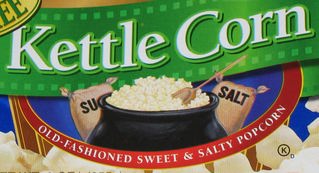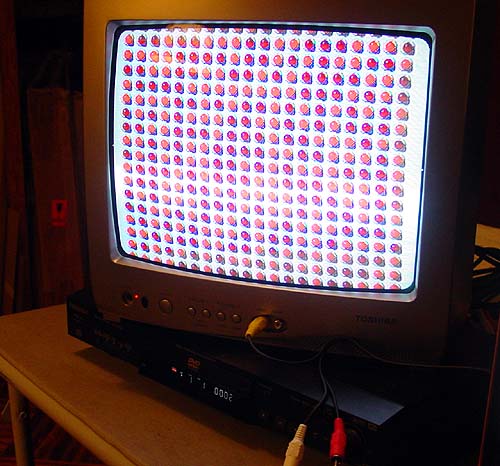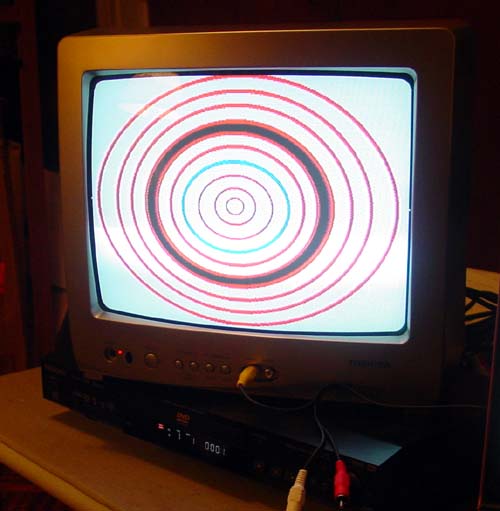View current page
...more recent posts
| good |
| sucky |
|
| sucky |
This is from Salon. Ex-FEMA head Michael Brown is a whiner, but his Senate testimony certainly lends credibility to the idea that "strong leader" George Bush left a major American city to drown:
Brownie turns the tables
George W. Bush and his homeland security chief are learning one of life's little lessons today: Hell hath no fury like a FEMA director scorned.
In testimony before the Senate today, Michael Brown said that he has been made a "scapegoat" for the federal government's flawed response to Katrina -- and that the real culprits are Michael Chertoff, the Department of Homeland Security and the White House itself. Brown said that "policies implemented by the DHS put FEMA on a path to failure" long before Katrina struck New Orleans. Once the storm hit and the levees failed, Brown said, Chertoff's DHS "saw an opportunity to assert itself, as it always tried to do in FEMA operations, which slowed things down."
Brown said that he called the Bush compound in Crawford, Texas, on the night that Katrina struck to inform the White House that levees had broken and water was flooding into New Orleans. He said he spoke with Deputy White House Chief of Staff Joseph Hagin and that he told him that "our worst nightmares" seemed to be coming true. The next morning, Bush left Crawford for San Diego, where he made brief comments about Katrina before delivering prepared remarks in which he compared the war in Iraq to World War II.
Brown says that White House Chief of Staff Andy Card rebuffed his efforts to solicit more help from the White House, ordering him to work through the "chain of command" instead. That chain ran through Chertoff and the DHS bureaucracy, Brown said. "We've done a great job as Republicans of establishing more and more bureaucracy," Brown told Maine Sen. Susan Collins.
Brown said that he cried in his hotel room during the early days of Katrina, frustrated by the failure of the federal government to deliver the help he knew it was capable of providing. Asked whether the Bush administration was making him the fall guy for Katrina, Brown said, "I certainly feel abandoned." As for the president, Brown said: "Unfortunately, he called me 'Brownie' at the wrong time. Thanks a lot, sir."
The blog The Sneeze unmasks the Kettle Corn conspiracy. It's "sweet & salty popcorn" but the manufacturers of the storebought versions don't use sugar, they use the chemical sweetener Sucralose. Check out this packaging for Act II "kettle corn": behind the popcorn on the label you see an old fashioned burlap bag of SALT and another one of SU--. The rest of the word is hidden so you think it's sugar, but according to The Sneeze it's Sucralose. Unbelievably lame, these guys. (hat tip to SHM)


bitforms vs vertexList Gallery Comparison Chart
(budding computer artists clip and save)
| bitforms | vertexList |
| Chelsea | Williamsburg |
| Occasional good shows of old school computer art | Finger on current scene |
| Owner opened gallery in Korea | Owner directed movie about 8-Bit art |
| Pipeline to MIT Maeda, er, Media Lab | Pipeline to "discourse artists" |
| Slickly packaged work | Lo-fi with aspirations to slickness |
| Mixes different kinds of computer art | Mixes computer and non-computer art |
| No theory to speak of | Theory out the wazoo, but sometimes wrong (thinks I'm a "Modernist") |
| Owner has fashionable eyewear | No eyewear |
| Owner opened gallery in Korea | Still in one location (Four Walls' old space) |
Missed the Rhizome Net Aesthetics 2.0 panel in Chelsea a couple of nights ago because I had to w*rk. Too bad--really wanted to go. MTAA has a report. The distinction between the early vernacular web and the current more "regulated" web laid out in in Olia Lialina's article here serves as a good background for understanding the shift from net art 1.0 to version 2.0. Essentially it's the world of home pages, links, and artist-scientists vs the world of blogs, Google, and fast delivery of every imaginable kind of content (except the gallerygoing kind), with artists, scientists, and artist-scientists struggling to make sense of it. I have also pontificated on it, though not in product release terms. Another distinction I would make is between the anecdotal ('70s conceptualism in web form--what Sally McKay has called "long-loading, find-the-place-to-click-me narratives packed with theoretically correct reference to the body or lack thereof") and the purely experiential (entertainingly transgressive images, music, and video produced in a collaboration-friendly, peer to peer, non-Industry environment; deliberate confusion between professional and amateur [the vernacular thankfully hasn't gone away]; better sound and pictures generally) that broadband and googling makes possible.
Update: Sal Randolph has a report on the panel at Rhizome.org.*
Update, 2011: The Rhizome link has been changed to http://rhizome.org/discuss/view/20235/ (scroll down to Randolph's comment).
Internet

Non-Internet

Internet

Non-Internet
"I like the ones on the Internet better."
"That's not the point--the shots on the bottom are just documentation of pieces that can never be experienced on the web, just as net art always flops in the gallery setting."
But seriously, I'm pretty happy with the DVDs I just burned (these flared-out shots notwithstanding), inspired by Paul Slocum's work for the Dallas show. Picked up that Toshiba TV on clearance for 74 bucks. The LED Grid is an HTML piece--a found GIF remixed to blink at different rates. I used a capture program to convert it to a video file, then burned the file to DVD, which is then set for chapter repeat in the player. For the OptiDisc piece, the same capture program played the original GIF 12 times to make the video, also set on chapter repeat. I like Paul's idea of burning several animations to one DVD and then having several TVs going at once. Now I know how to do it and don't have to bug my friends so much.
 "Technology cannot exist without the potential for accidents. For example, the invention of the locomotive also entailed the invention of the rail disaster. Virilio sees the Accident as a rather negative growth of social positivism and scientific progress. The growth of technology, namely television, separates us directly from the events of real space and real time. We lose wisdom, lose sight of our immediate horizon and resort to the indirect horizon of our dissimulated environment. From this angle, the Accident can be mentally pictured as a sort of 'fractal meteorite' whose impact is prepared in the propitious darkness, a landscape of events concealing future collisions. Even Aristotle claimed that 'there is no science of the accident,' but Virilio disagrees, pointing to the growing credibility of simulators designed to escape the accident -- an industry born from the unholy marriage of post-WW2 science and the military-industrial complex."
"Technology cannot exist without the potential for accidents. For example, the invention of the locomotive also entailed the invention of the rail disaster. Virilio sees the Accident as a rather negative growth of social positivism and scientific progress. The growth of technology, namely television, separates us directly from the events of real space and real time. We lose wisdom, lose sight of our immediate horizon and resort to the indirect horizon of our dissimulated environment. From this angle, the Accident can be mentally pictured as a sort of 'fractal meteorite' whose impact is prepared in the propitious darkness, a landscape of events concealing future collisions. Even Aristotle claimed that 'there is no science of the accident,' but Virilio disagrees, pointing to the growing credibility of simulators designed to escape the accident -- an industry born from the unholy marriage of post-WW2 science and the military-industrial complex." (hat tip to MBM)
